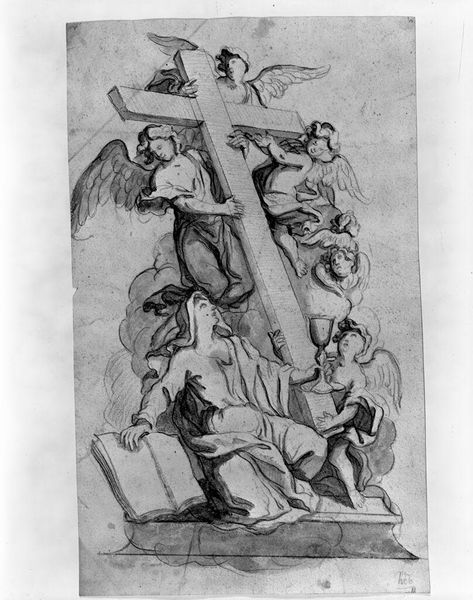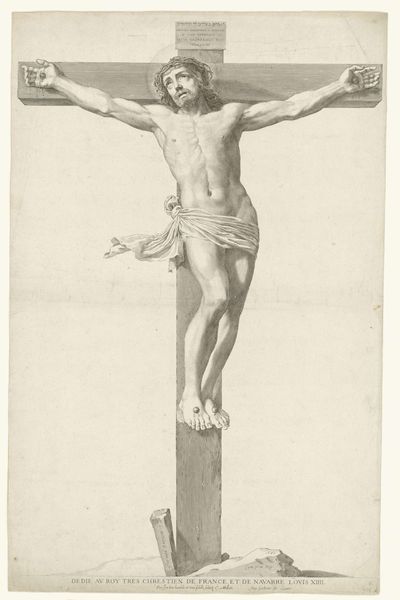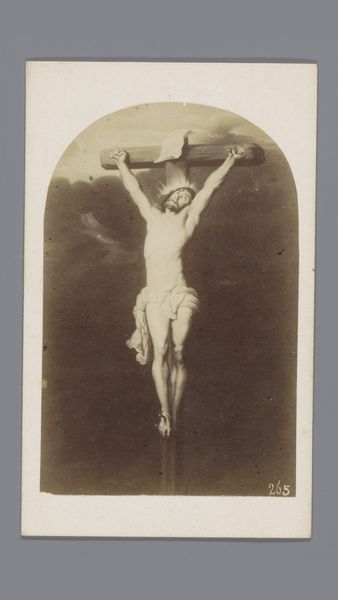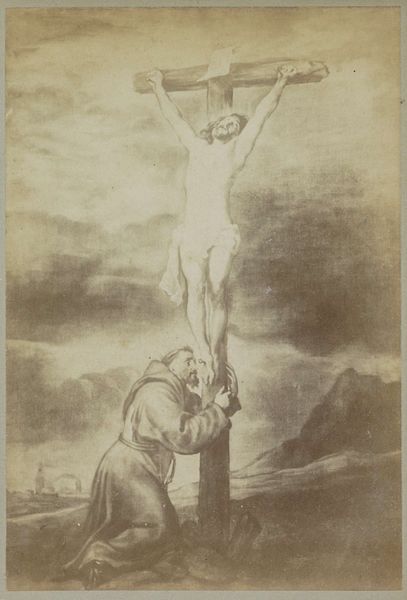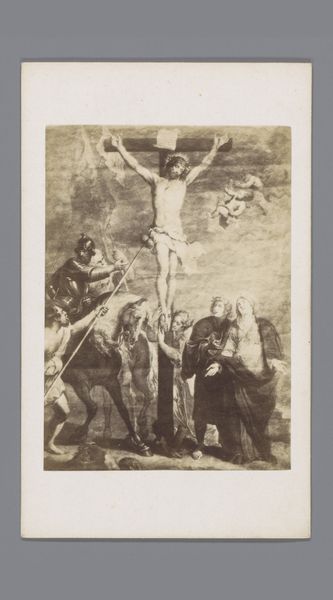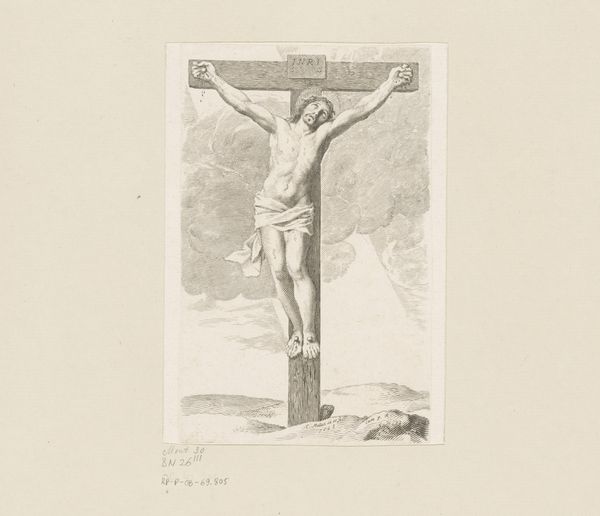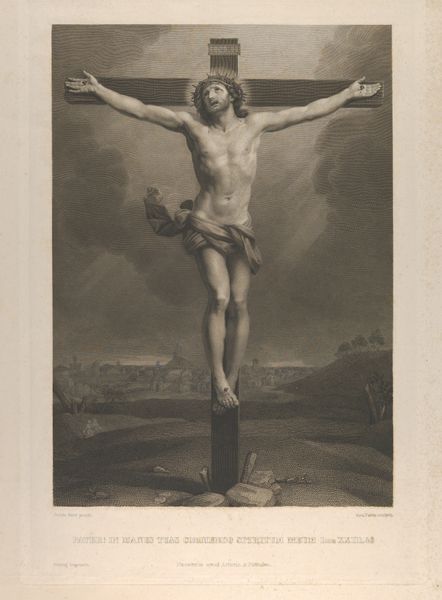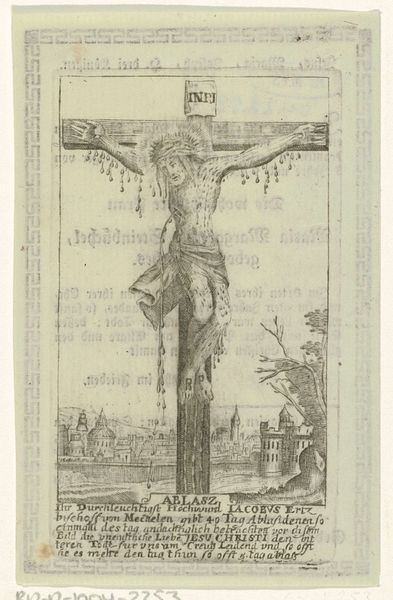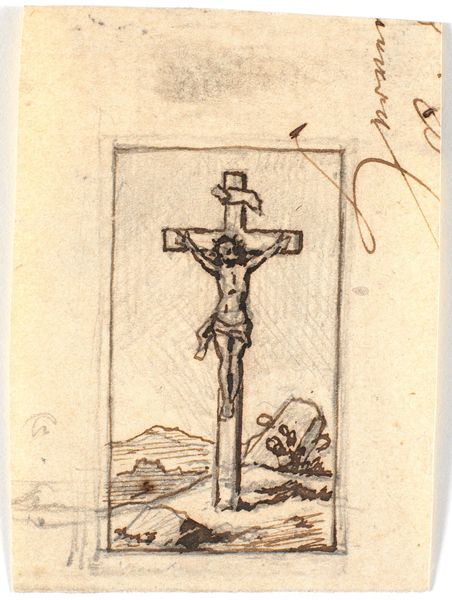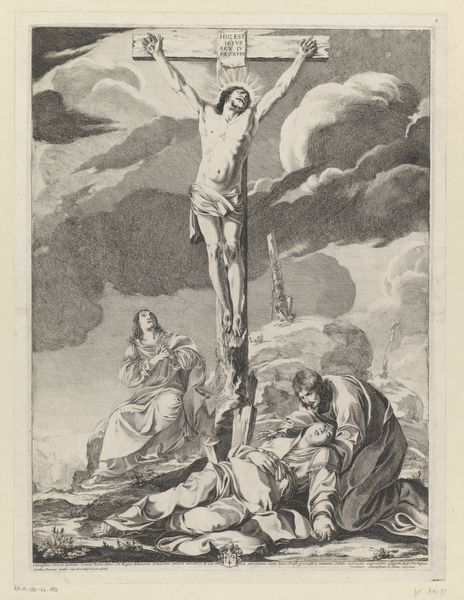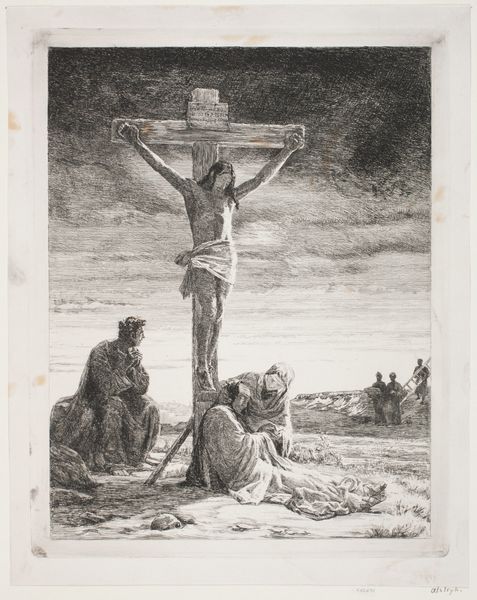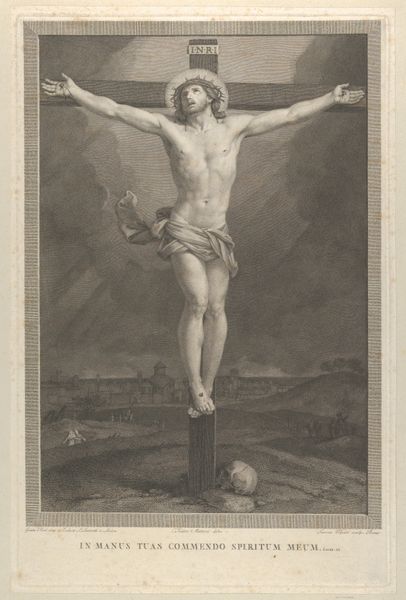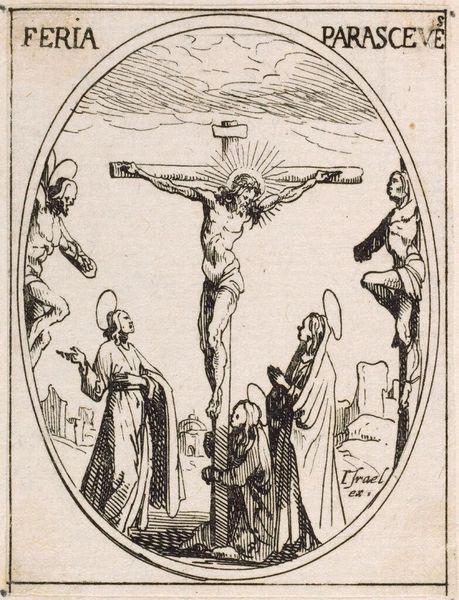
drawing, pencil
#
portrait
#
drawing
#
figuration
#
pencil drawing
#
pencil
#
crucifixion
#
history-painting
#
academic-art
#
charcoal
Dimensions: Dimensions unavailable
Copyright: Public Domain
Curator: Good morning. Today, we're observing John William Casilear's pencil drawing, "Crucifixion," likely from sometime between 1811 and 1893. It's currently part of the Metropolitan Museum's collection. Editor: Well, my immediate impression is the striking morbidity of the image. The artist masterfully uses dark charcoal smudges to give an eerie ambiance. There's so much death imagery going on. Curator: Indeed, notice how Casilear employs stark linearity in the cross itself, contrasting against the softer, smudged application defining the figure of Christ. The cross asserts an undeniable verticality. Its stark presence is only amplified by the bones strewn at its base, anchoring us to mortality. Editor: Precisely! Those skeletal remains carry echoes of the past, the sins and sacrifices, a visual representation of collective human suffering. This adds layers to the already potent symbol of the Crucifixion—rebirth out of ultimate sacrifice. Curator: Observe the almost hurried or fragmented quality of line and shading in the billowing clouds, juxtaposed to Christ's torso; notice that a very smooth continuous curvature shows ideal musculature. Editor: That divine anatomy presented against looming dark skies suggests divine suffering amid nature's indifferent or even malevolent force. There’s this really strong use of light and shadow to emphasize Christ’s agony. The symbol here evokes universal questions of suffering, redemption, and humanity’s struggle with mortality. I think its composition is very traditionally, deliberately evocative. Curator: One must also account for this being a study from within a sketchbook, therefore perhaps lending itself as being understood as incomplete or subject to continued construction. With his figure presented almost spotlessly in the throes of great duress… Editor: Right, his presentation amidst death hints at how religious iconography functions: to give meaning to death, suggesting transformation and a possibility of transcending earthly boundaries. What at first seems solely the tragic death of Christ unfolds as something promising life beyond suffering. It's a powerful visual statement, both haunting and ultimately, maybe, hopeful. Curator: A very affecting set of considerations brought forth to augment a beautiful visual investigation into form, the corporeal, and line. Editor: Definitely a worthwhile reflection on iconography meeting design to address mortality and, hopefully, something more.
Comments
No comments
Be the first to comment and join the conversation on the ultimate creative platform.
